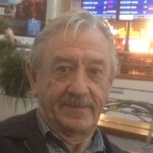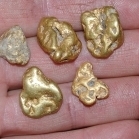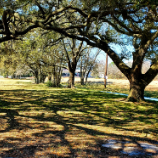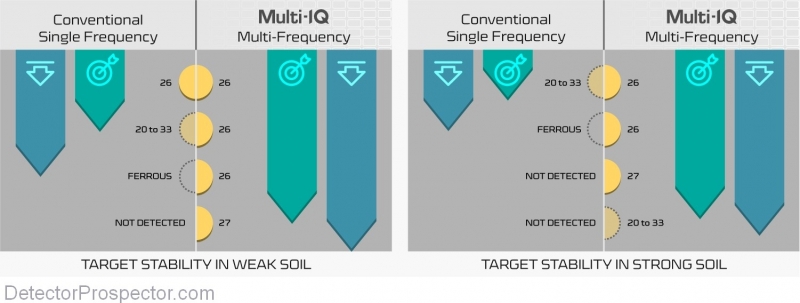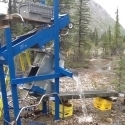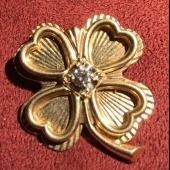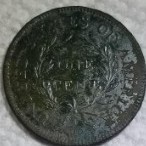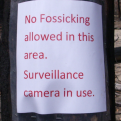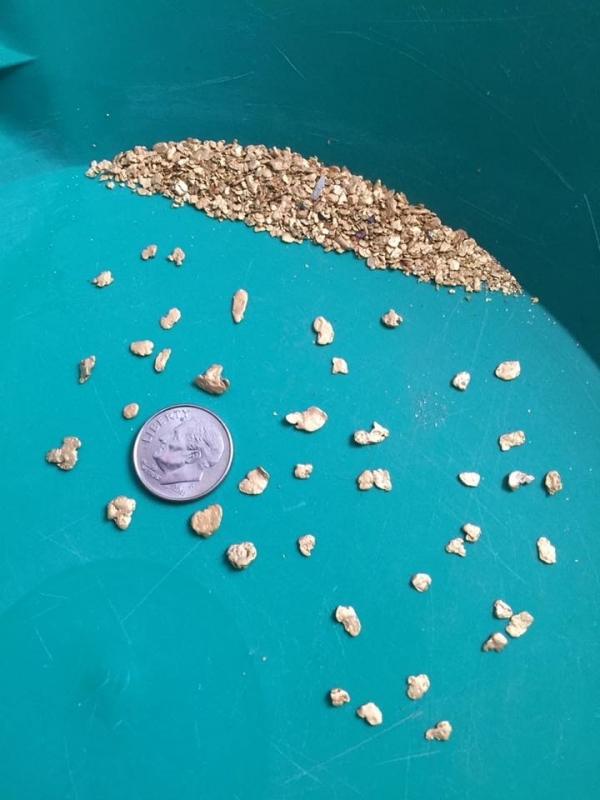Leaderboard
Popular Content
Showing content with the highest reputation on 11/02/2017 in all areas
-
My Apprentership Tally for the 2017 Season in Western Australia, 715 pieces of gold, Biggest nugget was 10.87grams, smallest was 0.09grams. Biggest patch was 62 nuggies in an area not much bigger than my 14ft caravan. All found with the mighty Zed. Gold is sectioned in the photo as explained : Top section and the small pile at the 9 o’clock position was from my trip early in the season ( roughly 3 months ) for 458 pieces. Small pile at the 8 o’clock position and remainder of the gold on the right lower section was from the latter trip of just over a month golding for 257 pieces. 9 o’clock & 8 o’clock piles was the 62 patch found on my last day of the early trip and clean up on the first day of the latter trip ( best patch bit was a 6 grammer with a total patch weight of 37.56 grams ) Total weight comes in at 11ounces ( possibly a tad more when I crush the speccies ) Cheers Ashley16 points
-
At one time before its release I had been interested in the Nokta Impact. Speculation ran rampant and I got sucked into the vortex. I already owned a Red Racer and a Gold Racer so I knew that Nokta/Makro made good detectors. As so often happens life intrudes on our metal detecting plans. In the last year I have not detected near as much as in years previous so I had shelved my interest in the Impact. Yet recently I have been able to detect more so I went ahead and acquired one. As usual, I first read the manual(what a geek). While the Impact is a more complex detector than either the Red or Gold Racer, the excellent menu tree and my perusal of the manual had me up and running in short order. At my first opportunity I took the Impact to a location that has had a serious pounding with the Deus, CTX, and who knows how many other detectors. I started detecting with the stock elliptical affixed to the stick. Although the Impact weighs about 4 Lbs. I thought it was nicely balanced so swinging it did not overly fatigue me. This machine has a mode for about any type of detecting you would want to do but on my 1st day I only tried 4 of them. GEN D, DI99, DI4, and VLX2. After a couple hours trying the different modes and learning the tones on the Impact I had found some non-ferrous items that were missed by all other machines but nothing that was a keeper, mainly miscellaneous bits of brass and copper. I thought it was time to switch gears so I threw on the 7" elliptical. I had previously been running mainly factory presets in the various modes but with this coil I wanted to gain back some of the depth I knew I would lose with the smaller coil so I bumped the sensitivity up. I worried about increased EMI but with this coil running hotter, EMI did not cause me any problems. I really like this tiny elliptical. It's the perfect size for working in the iron while still getting more coverage than a 5" or 6" round. I took this little football coil into the heaviest iron at the site and once again while I was able to pluck some non-ferrous targets out of that mess I found nothing to write home about(story of my life, LOL). I did try out the 15" coil. Honestly I am not a big coil guy unless I am swinging a PI and going for max depth. I love working in the iron with VLF's so usually a small coil is welded to the dirt end of whatever machine I am swinging at the time.This 15" is a coil I would use for very specific circumstances only as I would need to wear a harness if I was going to swing it very long. With the 15" mounted up to this machine it was very nose heavy and my arm hurt in no time at all. The wireless headphones seemed to work well. I did not notice any lag that would affect target recovery. A few times I thought I detected the slightest lag in heavy iron, but it was near the end of the day and honestly I was getting tired and probably a little cranky. Likely my imagination. At the end of my first day with the Nokta Impact I was favorably impressed with most aspects of the machine. My main gripes were 1) while well balanced it is still 4 Lbs. I am used to a Deus so when you grab this detector you wonder why it can't be lighter. 2) The tones are very digitized sounding. Some people may love these tones, me not so much. 3) The wireless headphones do not have a long enough adjustment band for me to wear them comfortably with a baseball cap. They rode up on my ears and irritated me. A few days later I decided to do a shoot out between the Impact and some other detectors I have to see how they performed with iron masking. This test was not done to rigorous scientific standards. LOL. Just a test I did for my own information. I can't post all the individual settings and results. I had to come to work on a tugboat and I forgot and left all my notes at home. I will give a quick synopsis of my findings. I hope some one finds it useful but it is just my own opinion. Others are likely to have different results. My friend Chuck(Strick) will post photos of the test for me because he is a good guy and has that down pat. The machines tested were; CTX 3030 with 6"R coil. Red Racer with OOR coil. Deus with 9" LF coil. Deus with Elliptical HF coil. Impact with 4x7" coil. I made sure the dirt was clean of targets befor flipping over a rubber welcome mat and inserting a 1926 SLQ and a 1855 seated dime into holes in the backing. I did this so the square nails I placed near the coins were slightly elevated over the coins. I manual GBed all the machines except the CTX. The dirt under the mat is kinda hot. It lights up most of the bars on the Deus FE meter. The results of the test were surprising to me. First that the CTX did so well in comparison to most of the other detectors. On the first scenario( quarter with one small square nail and one big square nail), all the detectors except the Deus with HF coil could generate a diggable signal on 25% +/- of angles swung on the target. The Deus with HF coil could get a diggable signal 360 degrees around the target. On the second scenario(dime with 3 nails), all the detectors except the Deus with HF coil could not generate a diggable signal from any angle swung. The Deus with HF coil could generate a signal 360 degrees around the target. As I said before I was a little shocked the CTX did so well in the quarter test scenario compared to most of the other detectors because I have seen the Red Racer, and Deus HF and LF coils eat it alive when comparing signals on live relic digs on un-dug targets in heavy iron. I thought the Red Racer would do better as I have also seen situations in which the little OOR coil on the Red Racer seemed almost magical on targets the Deus LF and other detectors have failed on. As far as the Impact is concerned I felt its performance in these two scenarios on that day in that dirt was was nothing to write home about but to be fair it did as well as any detector besides the Deus with HF coil. I was hoping for more as far as separation/unmasking ability from this detector with the 7" coil onboard. But I must say that a detectorist that I respect very much and I believe is a straight shooter tells me the Impact with 7" coil does beat the Deus with HF coil in some scenarios. Anyway, on that day in those two scenarios the Deus with HF coil spanked all the others. I am sure other detectorists will have different opinions or results and that is fine by me. I don't own stock in any of the companies manufacturing these machines. In summation I would say I do like the Impact. It has many fine features and I know I need way more hours on it to leverage all of its capabilities to my advantage. In my world the CTX is my park and lawn machine. The Deus with the HF coil has become my main relic machine for heavy iron. I love the Deus for its light weight, speed, and versatility. But now there is a new kid in town- the Impact. LOL . When I get time I know I will enjoy learning the nuances of this machine. I am looking forward to spending more time in the all-metal modes and some of the other modes I haven't explored yet, like Deep mode.6 points
-
3 points
-
Since leaving Alaska I have to admit my solution to getting cold is to quit and wait for it to get warmer!3 points
-
JR, sorry about the spelling, and you are correct about Holabird. I was just trusting to memory on the spelling of his name, but Sanders was known by two names, and it may have been Sanders Gill, although I thought it was Saunders Gill. A bit of 'googling' would probably sort the matter out. There are a couple more interesting and rather twisting tales that can be told in relation to the Orange Roughie, but I shall hold forth until I am sure the readers would be interested.3 points
-
Thank you Lunk, Dolan Dave, vanursepaul, bluthermal. Rockett : Used & tried a lot of settings as it was my first opportunity to try out the new Minelab update for the Zed, Factory settings work well but always try & see if you can get the Zed to run in Normal on the ground you are on. Jrbeatty : Yes was lot's of digging but i was lucky enough to find most of the gold in patches with only a small amount of rubbish targets, One patch of 31 small nuggies had 11 shotty pellets pretty much smack in the middle of the patch and no other rubbish anywhere. The 62 patch was only gold targets, did end up finding a boot tack about 20m away from the patch Cheers Ashley2 points
-
Tim -- I would offer a counter-point. I think target ID will be a little bit better on THIS unit (even better than FBS). Obviously, this is all speculation, but from what I can gather, reading between the lines (while given my lack of electronics engineering knowledge), it sounds like one of the big improvements/technological advances that is Multi-IQ, as compared to prior multi-frequency technologies, is revealed in that first paragraph that Dr. Wahrlich is quoted. While he gets into a bunch of stuff about phase- and amplitude-locking, drive voltage, etc. etc., my read on that, pondering it, and then putting it into a "conclusion" is as follows... It would seem that apparently when prior multi-frequency units arrive at target ID, they are comparing receive waveform to an ASSUMED transmit waveform. I say ASSUMED, because apparently a drive voltage is sent to the coil, and it is from this DRIVE VOLTAGE that the transmit waveform's "properties" are "assumed" (amplitude, phase, etc. etc.) But, I can see where that would be "idealized," because ANYTHING between control box and coil that would alter that drive voltage, even SLIGHTLY, would result in a correspondingly, slightly different transmit waveform. So, if, for illustration purposes, 1 volt is the "drive voltage" but only .99 volts is used at the coil to generate the transmit waveform, then the transmit waveform (resulting from the .99 volts) would be slightly different from a transmit waveform that would be generated by 1 volt. AND SO, if all of your calculations of target ID, soil mineralization, etc. etc. are based on comparing a tiny, weak receive signal to an ASSUMED, IDEALIZED transmit waveform, but the transmit waveform the machine ACTUALLY produced (and to which the receive waveform SHOULD HAVE BEEN compared) is slightly different, I could see where this would introduce ID inaccuracy, etc. And according to Dr. Wahrlich, THIS is apparently one of the advances that is going to show up in Multi-IQ -- that they are measuring the transmit voltage/waveform AT THE COIL, not at the control box, so the receive waveform to transmit waveform comparisons/calculations performed by the unit will be MORE ACCURATE than before, in prior technologies. My conclusion -- if all of my understanding of the technical part of this is correct -- is this: We all KNOW that multi-frequency technology is an improvement over single-frequency technology in terms of target ID; now, this new "breakthrough" that is part of Multi-IQ technology seems like it would mean that Multi-IQ technology is an improvement over prior MULTI-frequency technologies in terms of target ID. If my conclusion is correct, then we may all -- even users of FBS/FBS2 -- be in for a pleasant surprise. (I might also note that improved ability to deal with soil mineralization and the associated positive effects on accurate target ID basically implies, for all intents and purposes, as a necessary side effect, improvement in depth capability as well....because after all, we know that deterioration of target detection ability with depth is largely due to the effects of soil mineralization "drowning out" the target signal; improving your ability to deal with soil, all else being equal, means an improvement in depth capability...hmm!) Steve2 points
-
Well my 8 x 14 coil came yesterday and I got to hunt at an old school yard where coal waste has been discarded for many decades. The coil seemed to run fairly good. Noticed a few things: Actual ground balance was a little higher (tad over 8) than with my other coils. Increasing the delay didn't change the GB as much as my other coils. It was obvious when the GB balance was off by the increased false audio reports. I could actually run gain to 7, but past that the machine would false in this bad ground. With the stock coil I usually settle with gain of 6. Very good coverage. Felt lighter than the 12" stock coil, but I believe the 12" is a deeper running coil, air test might be in order I could actually pinpoint better (off the front end of the coil) than the stock coils. My holes were noticeably smaller due to better target location. Plenty deep enough, I know some may laugh, but I dug beer beaver tails at 6" in this terrible ground. But I was hunting for gold not coins. Looking forward to my next chance after Nate passes by. No gold jewelry found this time.1 point
-
I have a couple of machine/coil combinations that the swingweight could be described as "monolithic" based on that definition. ;)1 point
-
Minelab Electronics From http://www.minelab.com/go-minelabbing/treasure-talk/equinox-technologies-part-2. This is the second installment in a blog series introducing and explaining the technologies inside our new EQUINOX detectors… (Read Part 1 here.) What actually is Multi-IQ technology? What does the name stand for? What frequencies does it use? Is “Multi” the same or different for the various Detecting Modes? Is Multi-IQ the same or different for EQUINOX 600 and EQUINOX 800? Why use a single frequency? How does EQUINOX perform in certain environments? How does EQUINOX perform compared to other Minelab detectors? How does EQUINOX perform against other brand detectors? These are some of the myriad of questions we have seen since we published our EQUINOX Product Notice in mid-September. Some of the answers will have to wait until Minelab publishes reports from our field testers and/or you get your own hands on a detector to try yourself. In the meantime, let’s look further into the aspects of Multi-IQ technology. Multi-IQ is derived from: Simultaneous Multi-Frequency In-phase and Quadrature Synchronous Demodulation. So, full marks to “Pimento” on the Thomas Dankowski Metal Detecting Forum for this great deduction: “I think the IQ part of Multi-IQ is not suggesting how Intelligent it is, but is alluding to the mathematical I and Q, representing the two quadrature (90 degrees apart) components of the signal, (which are then demodulated, a key part of most metal detector workings)” But, that doesn’t mean EQUINOX is not an intelligent detector as well! We can go to a statement from Dr Philip Wahrlich, our principal technology physicist, about a key difference of Multi-IQ compared to the demodulation taking place in conventional single frequency VLF detectors: “Within the Multi-IQ engine, the receiver is both phase-locked and amplitude-normalised to the transmitted magnetic field – rather than the electrical voltage driving the transmitted field. This field can be altered by the mineralisation in the soil (in both phase and amplitude), so if the receiver was only phased-locked to the driving voltage, this would result in inaccurate target IDs and a higher audible noise level. Locking the receiver to the actual transmitted field, across all frequencies simultaneously (by measuring the current through the coil) solves these issues, creating a very sensitive AND stable detector” Precisely measuring these extremely small current variations is quite remarkable if you consider the levels involved. It’s actually parts per billion, or nanoamp signals, we are talking about here! With Multi-IQ, we can derive much greater target ID accuracy and increased detecting performance, especially in ‘difficult’ ground. In ‘mild’ ground, single frequency may perform adequately, BUT depth and stable ID’s will be limited by ground noise; whereas the Multi-IQ simultaneous multi-frequency will achieve maximum depth with a very stable target signal. In ‘strong’ ground, single frequency will not be able to effectively separate the target signal, giving decreased results; whereas Multi-IQ will still detect at depth, losing a minimal amount of target accuracy. This is how we would generally represent the multi-frequency advantage, based on our engineering test data. Let’s hear more from Philip Wahrlich about the technical details: “For each frequency the detector transmits and receives there are two signals which can be extracted which we refer to as I and Q. The Q signal is most sensitive to targets, while the I signal is most sensitive to iron content. Traditional single-frequency metal detectors use the Q signal to detect targets, and then use the ratio of the I and Q signals to assess the characteristics of the target and assign a target ID. The problem with this approach is that the I signal is sensitive to the iron content of the soil. The target ID is always perturbed by the response from the soil, and as the signal from the target gets weaker, this perturbation becomes substantial. With some simplification here for brevity, if a detector transmits and receives on more than one frequency, it can ignore the soil sensitive I signals, and instead look at the multiple Q signals it receives in order to determine a target ID. That way, even for weak targets or highly mineralised soils, the target ID is far less perturbed by the response from the soil. This leads to very precise target IDs, both in mineralised soils and for targets at depth.” ……………………………………………………………………………………………………………………………………………………………………………. “How many simultaneous frequencies?” you may ask, wondering if this is a critical parameter. Minelab has been carrying out detailed investigations into this in recent years. Just as you can colour in a map with many colours, the minimum number to differentiate between adjacent countries is only 4 – a tough problem for mathematicians to prove, over many years. Similar to the map problem, it’s perhaps not the maximum number of frequencies needed to achieve an optimum result, but the minimum number that is more interesting. When it comes to frequencies in a detector, to cover all target types, how the frequencies are combined AND processed is now more important, with the latest detectors, than how many frequencies, for achieving even better results. Efficient new technology = lower power = lighter weight = higher performance. * 20 kHz and 40 kHz are not available as single operating frequencies in EQUINOX 600. The Multi-IQ frequency range shown applies to both EQUINOX 600 and 800. This diagram is representative only. Actual sensitivity levels will depend upon target types and sizes, ground conditions and detector settings. The above diagram is intended to be a simplified representation of how different frequencies of operation are better suited to different target types; i.e. low frequencies (e.g. 5kHz) are more responsive to high conductors (e.g. large silver targets) and high frequencies (e.g. 40kHz) are more responsive to low conductors (e.g. small gold nuggets). The EQUINOX 600 offers a choice of 3 single frequencies and the EQUINOX 800 offers the choice of 5 single frequencies. Both models also have simultaneous multi-frequency options that cover a much broader range of targets than any one single frequency can – and they’re different across the Detecting Modes! We’ll consider this further in Part 3…1 point
-
One thing about Minelab - when they introduce a complete new detector series it is usually in line with this statement "When Minelab develop a new detecting technology we aim to create a paradigm shift from existing products and provide a clear performance advantage for our customers." Look at the history of multifrequency and selectable frequency at Minelab: 1991 BBS - Minelab Sovereign and derivatives like the Excalibur 1999 FBS - Minelab Explorer and derivative models like the E-TRAC 2005 VFLEX - X-Terra model series 2012 FBS2 - Minelab CTX 3030 2017 Multi-IQ - Equinox 600/800 I am a bit surprised that so many people consider BBS and FBS to be magical technology that can never be improved on. There are two obvious weaknesses, slow recovery speed/target masking and relative insensitivity to low conductors as compared to some competition. Multi-IQ is addressing these issues. What then going forward? Will a CTX 4040 have FBS3? Personally it looks to me like BBS/FBS has hit the end of the road. Just like with the GPX 5000 where Minelab recognized they had milked PI for all it is worth, and moved on to the GPZ 7000 and ZVT technology. People worry about the Equinox eclipsing (Eclipse would have been a good alternative name to Equinox) the CTX 3030 when it looks to me more like Multi-IQ setting the stage for future developments. One thing the CTX platform does is allow for a much more powerful battery, and one can only imagine what Multi-IQ combined with a more powerful battery and tuned for high conductors would be able to do, while retaining the low conductor attributes of the Equinox. And while adding target trace, etc. to the mix. Take the above with a grain of salt. I have no inside information about where the CTX platform is headed. These are just my speculations based on what I would do if I were laying out a product roadmap. Looks to me like Minelab has plenty of room to maneuver going forward. Equinox and Multi-IQ are probably just the start of what you will see coming from Minelab over the next decade. The CTX has been out over five years now and has had a good run, but there is no reason to think it can't be surpassed. I am consolidating the Minelab Multi-IQ Technology Explained posts into a single document here as each installment is released.1 point
-
This previous post, the gold was found in a central Indiana stream where some folks think it is all worked out? Took my friend 6-8 months or so to dredge this gold for 2017. He has to drive 200 miles round trip to the spot. Dunno if he got enough gold to pay travel expenses or not? I think he said this photo was 22 grams of gold. I only got fines in this location with sluicing. The dredgers are getting the good stuff pretty much. Is also the spot where the bedrock area is now under several feet of new gravels just washed in and downstream on this large bend about 100 feet across is where the pickers are being dredged up along with multi ounce copper nuggets. The bottom is jagged hand to arm size pieces of broken up bedrock in FAST moving water 1-5 foot deep. My friend says he has gotten like 10 pounds of copper nuggets in and around this stretch of creek, maybe 1/4 mile long.He is using an old Keene single sluice 4 inch dredge with air. Guess we best not tell Chris Ralph that Indiana has more than gold dust? -Tom1 point
-
I have an Outlaw and it's a nice machine. Also have a Deus V4, and a V3i. V3i's too heavy for my arm now. The Deus is nice and I'm learning it. The Outlaw is less stressful and faster to adjust on the fly using my thumb on the disc knob. All get the same depth with comparable coils. They all have their place. I'm waiting for the Equinox shakedown before ordering one. Not doing the send back for firmware updates like I had to do with the MX Sport. Happy with my stable now Tesoro's a good machine for it's purpose. Enjoy and be happy every day John1 point
-
We talk about the "old-timers" but in 100 years we will be the old-timers. There will be footnotes about the "Electronic Gold Rush" of the late 20th and early 21st century - and we will be the ones that had a part of all that. Making history with every nugget dug!1 point
-
Dress for success ;) Insulated Carharts and a Canada Goose Parka, oh and Baffin -100 Drillers boots. But the boots have steel toes and yeah...1 point
-
You have my sympathy having to work in those temps, The Yukon is no place for inferior clothing and any weak links will show up very quickly, I bought mine back in 2012 because I refuse to go through what I did a few years back where I had Ice on my coat covering my chest and I could not get my hands to work so I could not remove my gloves or my coat and the pain was something else, I have avoided catching colds or Flu since 2002 and I only got it back then was because of the Kids,, Can't say they never give me anything, I wear mine in temps of -12 to -22*c, I found that if you open it up it makes a wicked bed cover on chilly nights to, Lol It was about 2 or 3* here last night and my weather doodad says it's dropping below freezing next week, Winter is my favourite time of year because all the silly people wise up and stay home and the Air is fresh, There is a Company I found that makes Beaver mitts, they are not cheap but I might buy a pair just to see how they fare. John.1 point
-
Winter has arrived already in the Yukon. I tried the other day detecting some now exposed gravel bars on the Yukon river running through Whitehorse but the surface has already frozen up. All that was recoverable was a Canadian quarter and a five of diamonds fishing lure sitting on the surface lol Auminesweeper, the Snow Mantra is great eh! I've worked down to -45'c in mine, love it. But too hot above -15 for me. Was working for an airline in Yellowknife and we got an insane discount. Paid $150 off a paycheck back in 2000. Still a working jacket, it's built tough.1 point
-
Very attractive rocks Bob, I like them both. I'm not familiar with your second rock, but it certainly does respond nicely to the shortwave light. Hope you will post more of your summer finds over the winter months. I'll try to do the same with some of my rockhounding finds, probably later in the winter. WTG Jim.1 point
-
Awesome video, never been there yet . will be at Bill's outing.1 point
-
Wow ! Fantastic post, Thanks Reg & JR. Many many untold stories from that nugget photo collection, What a book it would be ! Cheers Ashley1 point
-
The "Heat Factory" ones I get from Costco don't run so hot, and last 5-6 hours. They're disposable. Package says to use them outside of the sock, so maybe that should be tried first. I've used them stuck to my feet under socks and the only discomfort was the big lump in my boot! A box of 30 pair is about $15 or there abouts. It snowed again (Minnesnowta) today but didn't stick much anywhere. Might see 40 this weekend but it'll be rainy they say. Hope to get out to detect some.1 point
-
In theory, if you used a hand warmer on your wrist, near where your pulse can be felt, this should warm the blood going to your fingers giving them some advantage. My sister made me a pair of wrist warmers, from old sweater sleeves cut off, and the cuff had a stitch such that the thumb went through the small hole and the palm the rest. This would hold a hand warmer in position pretty well if snug enough to do so. I work outdoors and these wrist warmers cover the gap between jacket sleeve and glove that often gets cold air if not snow in there (one never slips or trips in rugged terrain when there's snow on the ground, right?). So before you toss out your old sweater or sweatshirt, or your kids if they've outgrown them (actually may be better as they'll hold closer), consider making wrist warmers to hold the hand warmer against your pulse point. Just a thought... Now if you've got a plan for softening the soil so targets can be dug in winter, I'm all ears!1 point
-
I bought a 2300 used with just over a year and a half of warranty left. I used it for a year and was starting to have problems with the knuckle being loose. I couldn't tighten it much more without feeling like something was going to break. I called up Minelab and they said send it in. Cost me $50 with insurance. A week later I got a brand new 2300. No complaints about having to pay the shipping back to them. Thank you Minelab!! I've also had a couple coils now, one from White's and one from Makro. Both with cable issues and each less than a year old. Both replaced with new ones. The White's I had to pay to send it in which I didn't mind since I bought it used. The Makro, which I also bought used... I just contacted them and was able to prove what the problem was and I got another about a week later. The one with the problem still works as long as I don't flex the cable in a certain spot, so it's a 'back-up' in case something happens with the new one. Thank you White's and Makro!! Thank you Steve Herschbach for providing a great classifieds forum where I have saved a lot of money buying from reputable members. Luke1 point
-
What a story Reg and fantastic reading.What I would give to sit around a campfire with you and JR, cant wait for the next installment1 point
-
I was made aware of the Washington nugget hoax when Murray phoned me and told me of a story in the Gold Gem and Treasure magazine. Upon purchasing the magazine, I read an article titled 'The one they missed'. There was a photo of the 'Orange Roughie', and a story of how this nugget was found near the town of Washington in Califonia. G G T magazine had done a story some years earlier on the Discovery of the Roughie, but obviously had failed to notice that the two nuggets were in fact the same one. I contacted a friend who was a well known and respected gold dealer to see if through his American connections we could find out how the Roughie had passed from Rattlesnake John to Saunders Gill who was claiming to be the finder. He was traced to a veterens hospital in Chigago, but due to his advanced years, had little memory of the events of that time. John was a returned soldier who had served in the Pacific in World War two. I had sold the Roughie to John after trying unsuccessfully for two years to find a buyer in Australia. Researching American news articles revealed that the nugget had been exhibited across the country, creating a great deal of interest, due to the fact that nuggets of that size were extremely rare in California, and amazing that the 'old timers' had missed that one. Saunders Gill had claimed he had found the big slug using new American detector technology which enabled him to find it at a depth of over two meters, where the signal had 'sceamed' at him. The dodgy company that made these detectors were getting exposure, and were widely advertising them, while Saunders Gill was attempting to sell shares in a company to remine his property. A geologist named Fred Hollibird had examined the nugget and declared it as a genuine example of Californian gold stating that pockets of cemented gravel in the nugget was proof positive that it came from the Blue Lead, as claimed by Saunders Gill. (why he didn't notice the obvious color difference between that lump and other Californian gold is beyond me.) Hollibird, who was in partnership with a man named Kagin, who owned the auction house that sold the nugget for US $460,000, issued a certificate of authenticity. Meanwhile, Murray had been in contact with George Warren, who had a TV show in America. George had always believed that there was something fishy about the Washington nugget story, but lacked proof until a phone call from Murray. This was manna from heaven for George.who wasted no time blowing the whistle on the whole scam. At first Kagin and Hollibird tried to bluff it out, claiming that we were a pair of Ozzie con men out to try to stooge money out of them.(how would that work?) The idiots had picked the wrong nugget for a scam, as the Roughie had received huge publicity due to the fact that I had found it with a Minelab GT16000 prototype, and the deal that I had with ML was that anything of significance that I found could be used for advertising and promotion.That exercise probably sold thousands of detectors for Minelab. Eventually Hollibird had to admit that the nugget was indeed Australian, and then claimed that he had been a victim. Kagin said that the money from the sale was refunded and the nugget resold. Saunders Gill went into hiding and the detector mob quickly withdrew all advertising. At the end of it all no one was charged with fraud, and the story just fizzled out, leaving history slightly rewritten as to the original finder and seller. I shall leave it to the reader to deduce who the liers and crooks were.1 point
-
If your cold try some buffalo wool gloves. They will keep you warm and still give good dexterity. https://thebuffalowoolco.com/collections/bison-apparel/gloves1 point
-
1 point
-
You're welcome Jin, and good luck. One of the farmers whose property Reg and I prospected on ended up getting a detector himself. We thought he was showing rather a lot of interest in the process! He was good at it and learned quickly. He picked up a 4 oz patch I'd somehow managed to zig zag through, neatly avoiding everything A humbling experience for yours truly (and Wilson certainly won't let me forget) but his dear wife thanked us profusely for giving him renewed interest in life following debilitating heart surgery.1 point
-
1 point
-
1 point
-
0 points




